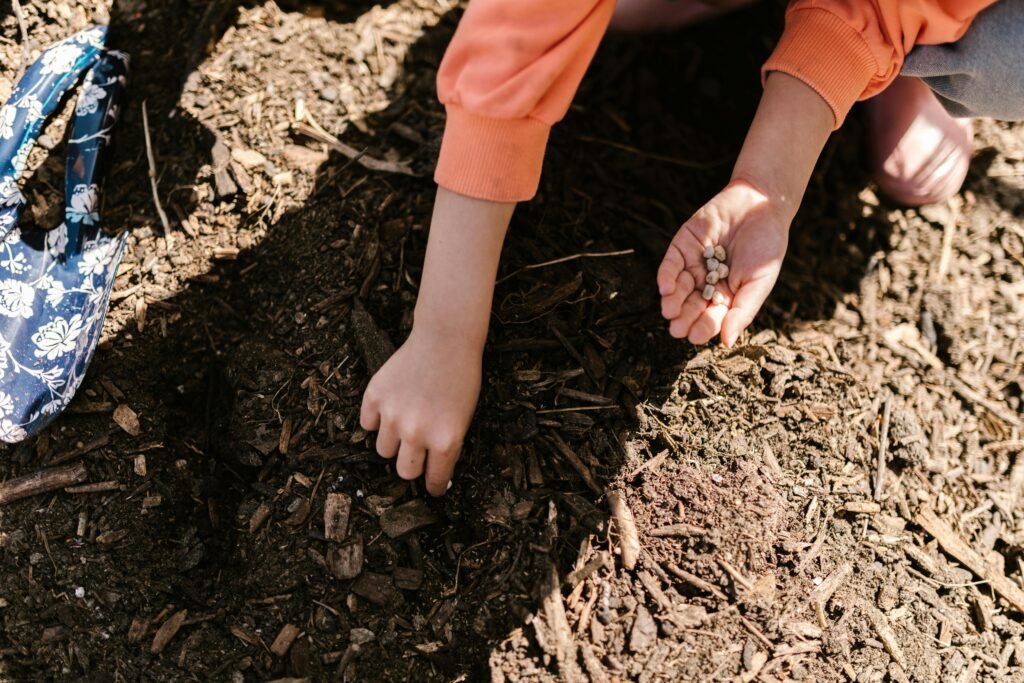Hey Fellow Plant Parents!
Have you ever had a plant in your garden that just refused to thrive? The culprit might not be your watering schedule or lack of nutrients—it could be the soil pH and its impact on plant health.
Though often overlooked, soil pH and plant health are closely connected. Together, they play a pivotal role in determining whether your plants flourish or flounder. Let’s dig into the details to understand why soil pH matters and how you can manage it to give your garden the best chance at success.
What Exactly is Soil pH?
Soil pH measures how acidic or alkaline your soil is, using a scale from 1 to 14:
- 1 to 6.9: Acidic soil
- 7: Neutral soil
- 7.1 to 14: Alkaline soil
Most plants prefer soil that’s slightly acidic to neutral, i.e. the 6–7 range. However, some plants, like blueberries and azaleas, love acidic soil, while others, such as lavender and certain herbs, thrive in more alkaline conditions.
Think of soil pH as the invisible hand that controls how plants access nutrients. Even if your soil is nutrient-rich, if the pH isn’t right, those nutrients can remain locked away, out of reach of your plants.
Why Does Soil pH Matter?
Soil pH affects several key aspects of plant health, and understanding it can save you a lot of frustration as a gardener. Here’s how:
1. Nutrient Availability
When soil pH is too high or too low, plants struggle to absorb essential nutrients.
- In acidic soil, nutrients like iron and manganese are more accessible, but phosphorus and magnesium can become unavailable.
- In alkaline soil, calcium and magnesium are plentiful, but iron, zinc, and phosphorus can get locked up, causing deficiencies.
You might notice yellowing leaves, stunted growth, or poor fruiting—all signs your plants aren’t getting the nutrients they need, even if they’re present in the soil.
2. Microbial Activity
The microorganisms in your soil are like your garden’s unsung heroes. They help decompose organic matter, releasing nutrients that plants can absorb. Most of these microbes thrive in soil with a neutral to slightly acidic pH. If your soil is too acidic or alkaline, microbial activity slows down, affecting the overall fertility of your soil.
3. Plant Suitability
Every plant has its preferences. For instance:
- Acid-loving plants like blueberries, camellias, and rhododendrons prefer a pH of 4.5–6.
- Most vegetables, like tomatoes, carrots, and beans, do best in the 6–7 range.
- Alkaline-loving plants such as lavender, thyme, and artichokes thrive in soil with a pH above 7.
Knowing your soil’s pH can guide your planting choices and save you from trying to grow plants that aren’t suited to your soil conditions.
How to Test Your Soil pH
Testing your soil’s pH is a straightforward process and essential if you’re serious about gardening. Here are your options:
- DIY Test Kits
These kits are widely available at garden centers and are easy to use. Mix your soil sample with a solution, and a color change will indicate the pH. - Digital Soil Meters
A digital meter provides more accurate readings. Insert the probe into the soil, and you’ll get a pH reading within seconds. - Professional Testing
For detailed results, consider sending a soil sample to a local agricultural extension or testing lab. They’ll provide not only the pH but also a breakdown of your soil’s nutrient levels.
Pro tip: Test different areas of your garden separately, as soil pH can vary even within a small space.
How to Adjust Your Soil pH
If your soil’s pH isn’t ideal for the plants you want to grow, don’t worry—you can adjust it. Here’s how:
Lowering pH (More Acidic)
- Sulfur: Adding elemental sulfur is a reliable way to acidify soil. It works slowly, so apply it several months before planting.
- Compost and Organic Matter: Materials like pine needles, coffee grounds, or peat moss can gradually lower pH over time.
- Aluminum Sulfate: This works quickly but should be used sparingly, as overapplication can harm plants.
Raising pH (More Alkaline)
- Lime: Agricultural lime is the most common amendment for raising pH. It’s available in powdered or pellet form and should be mixed into the soil.
- Wood Ash: Sprinkling wood ash on your soil is a natural way to make it more alkaline, but use it sparingly to avoid overcorrecting.
- Crushed Eggshells: These release calcium into the soil over time, slowly increasing pH.
How to Maintain Healthy Soil pH
Once your soil’s pH is in the right range, regular maintenance will keep it there. Here’s how:
- Test Annually: Soil pH can shift due to rain, fertilizers, or decomposition of organic matter. Test at least once a year to catch changes early.
- Use Balanced Fertilizers: Some fertilizers can alter soil pH. Ammonium-based fertilizers tend to lower pH, while nitrate-based ones can raise it.
- Add Organic Mulch: Mulches like straw, wood chips, or compost act as a buffer, helping maintain a stable pH.
Work With What You Have
Sometimes, the best approach is to choose plants that naturally thrive in your soil’s existing pH. Acidic soil? Try growing hydrangeas, ferns, or blueberries. Alkaline soil? Mediterranean herbs like rosemary, oregano, and sage will love it.
The Bottom Line
Soil pH might sound technical, but understanding it is one of the most practical steps you can take to improve your garden. With a bit of testing, some careful adjustments, and ongoing maintenance, you can create a thriving environment where your plants get all the nutrients they need to grow their best.
HAPPY PLANT PARENTING! 🌿
